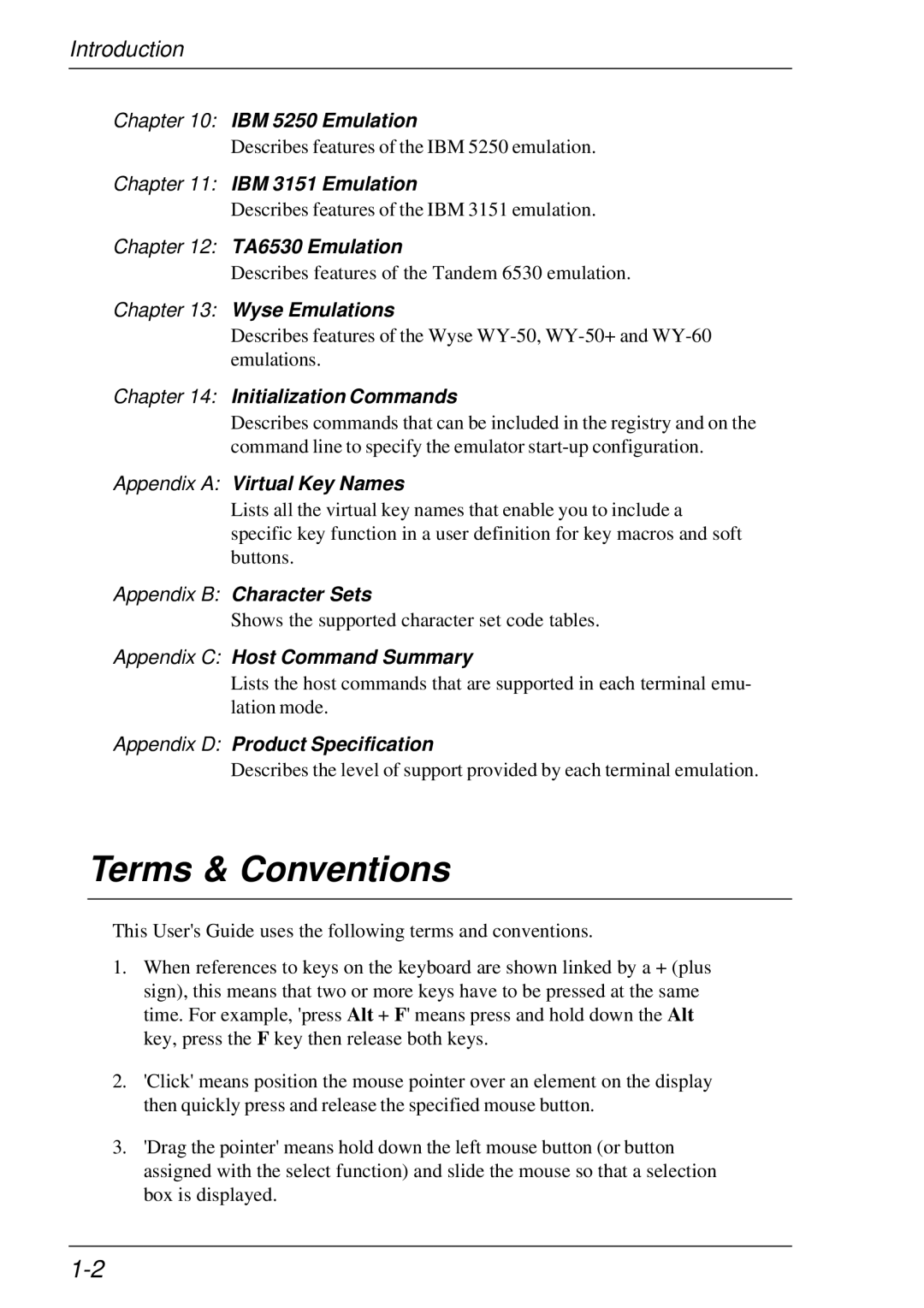
Introduction
Chapter 10: IBM 5250 Emulation
Describes features of the IBM 5250 emulation.
Chapter 11: IBM 3151 Emulation
Describes features of the IBM 3151 emulation.
Chapter 12: TA6530 Emulation
Describes features of the Tandem 6530 emulation.
Chapter 13: Wyse Emulations
Describes features of the Wyse
Chapter 14: Initialization Commands
Describes commands that can be included in the registry and on the command line to specify the emulator
Appendix A: Virtual Key Names
Lists all the virtual key names that enable you to include a specific key function in a user definition for key macros and soft buttons.
Appendix B: Character Sets
Shows the supported character set code tables.
Appendix C: Host Command Summary
Lists the host commands that are supported in each terminal emu- lation mode.
Appendix D: Product Specification
Describes the level of support provided by each terminal emulation.
Terms & Conventions
This User's Guide uses the following terms and conventions.
1.When references to keys on the keyboard are shown linked by a + (plus sign), this means that two or more keys have to be pressed at the same time. For example, 'press Alt + F' means press and hold down the Alt key, press the F key then release both keys.
2.'Click' means position the mouse pointer over an element on the display then quickly press and release the specified mouse button.
3.'Drag the pointer' means hold down the left mouse button (or button assigned with the select function) and slide the mouse so that a selection box is displayed.
